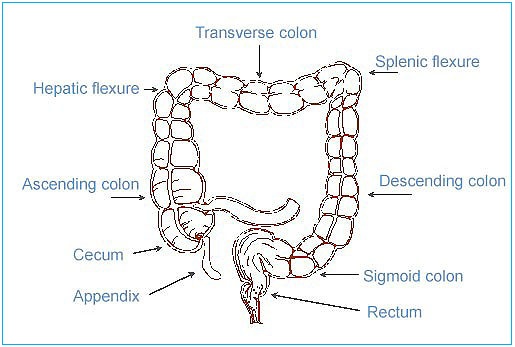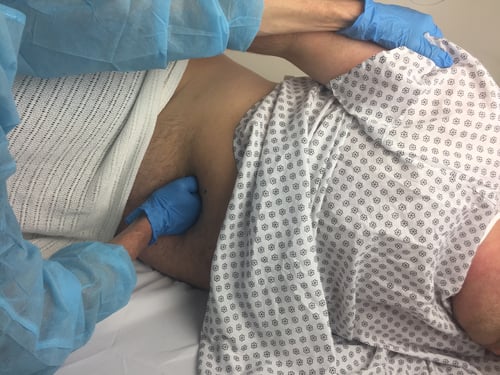What Is a Difficult Colonoscopy?
by Larissa Biggers, on August 10, 2018
The Definition of “Difficult”
A difficult colonoscopy is one “in which the endoscopist has trouble getting through the entire colon or fails to do so,” said Dr. Jerome Waye, in an interview with the journal Gastroenterology & Hepatology. Difficult colonoscopies are problematic because they can result in longer-than-expected procedure times, incomplete procedures, and higher risks.
Sometimes, endoscopists cannot predict who will have a challenging colon, and / or the reason for difficulty is unclear. However, according to Waye, there are two main causes of difficult colonoscopies: 1) an angulated or narrowed sigmoid colon or 2) a redundant colon.

Reason #1
The sigmoid colon can often have sharp turns or angulation, even more dramatic than pictured above. (Imagine trying to guide a garden hose around a very sharp turn without being able to firmly push or pull.) What causes these twists and turns? It can be a function of anatomy, and we do know that certain patients are more prone to angulation--women (with ovaries, a uterus, etc. that take up space in the abdominal cavity), patients with prior inflammation or surgery (who might have scar tissue and adhesions), and patients with long, redundant colons.
Reason #2
A redundant colon, sometimes referred to as an elongated or tortuous colon, is an anatomically long, floppy colon. Because of the length, it naturally twists, turns, and flips onto itself to fit into a comparatively small abdominal cavity. This can make colonoscopy quite challenging, as the advancing scope must maneuver through looped segments of bowel. As the scope advances through these twists and turns, the endoscopist might apply extra pressure and can stretch the bowel wall, causing discomfort and possibly raising the risks of perforation or tears. Dr. Todd Witte, in the Canadian Journal of Gastoenterology, notes that “loops or angulation in the colon are possibly the most common patient-related source of difficulty.”
Making Difficult Doable
So, how does the colonoscopist solve these problems? The most common method to reduce the difficulty of the colonoscopy is to have an assistant apply manual pressure on the patient’s abdomen as the scope is pushed forward. This manual pressure acts like a splint to prevent excessive stretching of the bowel wall. This practice might sound unusual, but the American Society for Gastrointestinal Edoscopy (ASGE) states, “The importance of external transabdominal pressure to assist advancement of the colonoscope should not be underestimated.”

If this technique does not work, the patient is typically repositioned (i.e., rolled onto his or her back or other side). In one study, abdominal pressure or change of body position was used in colonoscopy 82% of the time in order to get the scope fully inserted, with an average of 3.75 pressure applications per colonoscopy. Other research found that out of 3,248 colonoscopies, 60% of patients required abdominal pressure, and 36% needed body repositioning.
Risks to Staff
These tasks, while necessary, can be physically demanding and put nurses and technicians at higher risk for injury. In three recent studies involving over 600 endoscopy nurses, more than half had suffered at least one musculoskeletal injury on the job, and 24% indicated that they were forced to miss work to recover.
Given that there is nothing patients can do to change their native anatomy, scar tissue, or adhesions, endoscopists and their staff will continue to encounter difficult colonoscopies. But nurses and technicians should be alert to the risk of injury, use proper techniques for handling patients, and be alert to products that can help to make a challenging colonoscopy less difficult.


